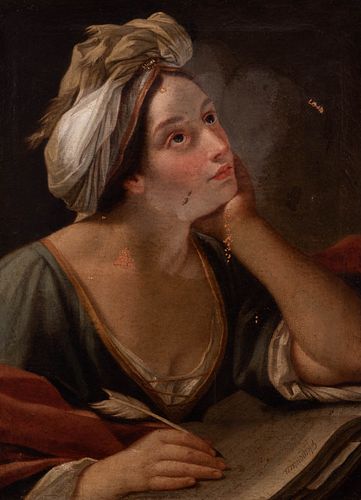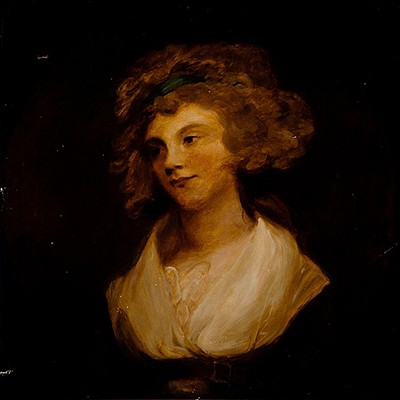Italian school; XVII century. "The Sibyl of Cumae". Oil on canvas.
About Seller
Carrer Aragó 346
Barcelona
Spain
Setdart Subastas was born in 2004 and is currently the first online art auction in Spain with solidity, prestige and reliability guaranteed by our more than 60,000 users. Setdart has a young, dynamic and enterprising team ready to successfully manage the purchase and sale of art works through custom...Read more
Two ways to bid:
- Leave a max absentee bid and the platform will bid on your behalf up to your maximum bid during the live auction.
- Bid live during the auction and your bids will be submitted real-time to the auctioneer.
Bid Increments
| Price | Bid Increment |
|---|---|
| EUR€0 | EUR€10 |
| EUR€200 | EUR€25 |
| EUR€500 | EUR€50 |
| EUR€1,000 | EUR€100 |
| EUR€3,000 | EUR€200 |
| EUR€5,000 | EUR€500 |
| EUR€10,000 | EUR€1,000 |
| EUR€20,000 | EUR€2,000 |
| EUR€50,000 | EUR€5,000 |
About Auction
Nov 25, 2021
Setdart Auction House sofia@setdart.com
- Lot Description
Italian school; XVII century. "The Sibyl of Cumae". Oil on canvas. Presents repainting and perforation on the canvas. Measurements: 65 x 49 cm; 76 x 58 cm (frame). The Sibyl of Cumae was the priestess who presided over the oracle of Apollonius in Cumae, a Greek colony located near Naples, Italy. Because of the importance of the Cumaean Sibyl in the legends of early Rome codified in Virgil's Aeneid VI, and because of her proximity to Rome, the Cumaean Sibyl became the most famous among the Romans. Within the Italian school it was common, since the Renaissance, to depict Sibyls in compositions similar to those of contemporary portraiture, as ladies richly attired in the fashion of the time. In fact, there are known examples of works in which important aristocrats are portrayed as sibyls, both in Italy and in other countries. In fact, Velázquez himself portrayed his wife, Juana Pacheco, as a sibyl (1632, Museo del Prado). We can also find more recent examples, such as "La sibila de la Alpujarra", a portrait of the singer Carmen Casena made in 1911 by Julio Romero de Torres, currently kept in his museum. At a formal level it is also noteworthy that it is a work where you can appreciate a pictorial influence of the Roman school, the chromatism, warm and around a palette and the perfection of the drawing, as well as the regularity and balance of the ideal face of the figure, which refers to a sensitivity close to a language of classical character. In ancient Greek mythology, the Sibyl was a prophetess, sometimes inspired by Apollo and whose powers had a divine origin. However, the number of these women soon increased from three to twelve, in all cases without knowing their names, but knowing them only by the name of the place where they lived. It was the Renaissance who recovered this figure, considering them heralds of Christ in the pagan tradition in order to give value to it and "Christianize" it. Of all the works in which they appear, the best known is probably Michelangelo's Sistine Chapel Vault, which shows the five most representative of the time (Eritrea, Persian, Libyan, Cuman and Delphic).
Dimensions:
INV Number:
65 x 49 cm; 76 x 58 cm (frame).
35256446 - Shipping Info
-
In-house shipping available. Please inquire at admin@setdart.com.
-
- Buyer's Premium



 EUR
EUR CAD
CAD AUD
AUD GBP
GBP MXN
MXN HKD
HKD CNY
CNY MYR
MYR SEK
SEK SGD
SGD CHF
CHF THB
THB

















